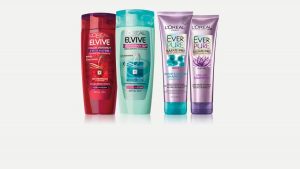
How Often Should You Do A Hair Mask? Essential Elements
First, how often should you do a hair mask? Well, that depends on the type of your hair.
Hair masks are the ultimate hair care product. A hair mask is always available to help with issues that shampoo and conditioner cannot fix. With the help of these specific products, your hair can become a walking hair commercial in as little as 10 minutes.
However, even though we wish we could use hair masks every day, that is not how frequently they should be used.
Find out, based on your hair type, how frequently you should apply a hair mask by continuing to read!
For more specific information, keep reading.
Table of Contents
Hair Mask Frequency By Hair Type
Thick Hair: Once Or Twice A Week
You should trim your hair once or twice a week because you have a lot more hair. You can increase the frequency of use to twice weekly if you’re using more specialized masks. However, once a week is perfectly fine if you’re using a mask only to add moisture.
Curly Hair: Once A Week
Usually, applying more hair masks will be beneficial for your thick, curly hair. Multiple spirals in this hair type make it challenging for sebum oil to cover every strand uniformly. This makes it prone to frizzing and drying out.
Your hair mask may need to be used up to twice a week in order to be effective. Your curls will have more definition, be bouncy, and be less prone to frizz.
Greasy Hair: Once A Week
The hardest thing to manage is greasy hair. Haircare items frequently exacerbate the issue rather than solving it. Therefore, limit how often you use hair masks to no more than once per week. Furthermore, it’s crucial that you avoid using any old hair mask. Apply a conditioner to your hair that will treat your oily hair, not make it even greasier.
Healthy Hair: Once A Week Or Every Other Week
Those who have naturally healthy hair rarely need to use a hair mask. It’s preferable to do it once a week, but you can change it to once every other week if you like. In essence, a hair mask fills in the moisture and shine that your strands are lacking. Since using a hair mask too frequently can harm your strands, when they’re healthy they don’t require that extra boost of hydration as much.
Fine Hair: Once A Week
One weekly mask application is beneficial for fine, thin hair. Overusing it can make your strands heavier. And you don’t need that if your hair is already fine. Not more weight, but body mass and volume. You should also use a mask made with fine hair in mind.
Dry Hair: Twice A Week
The porous fibers in hair masks act as a sponge to absorb moisture when your hair needs it. Hair masks are made to provide ample hydration. Therefore, it makes sense that if you have dry locks, you will need to deep condition more frequently.
To start, apply more product to your hair twice a week (about a quarter-sized amount). Depending on your needs, use it more or less frequently.
Damaged Hair: Two To Three Times A Week
You’ll gain more benefits from including a hair mask in your routine fairly frequently the more damaged your hair is (whether the damage is the result of coloring or styling it). To ensure that your locks maintain their luscious condition, we advise using it two to three times per week. You can use a mask less frequently once they’re restored to their prior state.
Hair Mask Benefits
Many of us find that during perimenopause our hair is thinner, weaker, and more prone to damage than before.
When used at the frequency suited for your hair type, masks can significantly improve your hair’s appearance and manageability, counteracting these common concerns and giving you a mane that’s:
- Shinier
- Softer
- Stronger
- Smoother
- Less prone to damage

Can I Use A Deep Conditioner Every Day?
In comparison to standard conditioners, hair masks typically contain higher concentrations of fatty acids and other hydrating ingredients.
It makes sense that more hydration would be preferable if even a little bit did help, especially if your hair is dry and brittle. This is not the case with hair masks.
You run the risk of over-moisturizing your hair and disrupting the normal biome of your scalp when you deep condition too frequently.
This is due to the fact that your hair can only absorb a certain amount of the extra oils and conditioners in your mask.
You may experience a condition known as hygral fatigue after reaching the maximum saturation point for your hair.
Your follicles constantly expand and contract as a result of the extreme moisture retention, which leads to hygral fatigue. By deep conditioning your hair too frequently, especially if it has high porosity, you run the risk of developing hygral fatigue.
Symptoms of hygral fatigue include:
- A gummy texture when wet
- Dullness
- Tangling
- Frizziness
Reduce the frequency of using hair masks if your hair starts to feel limp, lifeless, or mushy.
See more about
- Is Cantu Good For Your Hair?
- Is Salt Water Good For Your Hair?
- Should You Condition Your Hair Every Day?
What Sort Of Hair Mask Should You Use?
There are literally thousands of different hair mask options, but there are only two main categories: protein-based and pure moisture masks.
Moisturizing hair masks give hair a luxurious dose of hydration and moisture. Like a conditioner taken to extremes, they. They ensure soft, controllable results by moisturizing roots to ends evenly, restoring and defining waves and curls, and delivering moisture to the roots.
These have a little more leeway because you don’t have to use a precise amount, and if you have coarse or curly hair, you can use them more frequently than the label suggests.
If you use moisturizing hair masks more than once a week, you should be careful because buildup can easily weigh down fine hair.
Use a moisture-based hair mask if your hair is:
- Medium to coarse in texture
- Wavy or curly
- Frizzy
- Rough to the touch
- Brittle or dry
Protein-based hair masks include one or more sources of protein for hair. Masks for strengthening or damage repair are the usual names given to them. Protein hair masks can act as a “filler” for weak or damaged hair to help with damage, breakage, and shedding.
There is less room for error with these hair masks because protein can be problematic for hair with low porosity. Protein overload, which occurs when too much protein builds up on hair strands and causes them to become brittle, hard, and easily broken, can result from overusing a protein hair mask.
Use a protein-based hair mask if your hair is:
- Fine in texture
- Medium or high porosity
- Chemically processed
- Damaged
- Weakened and easily broken
Know Your Hair’s Porosity
You need to know how porous your hair is to decide if using a protein-based hair mask will be effective for it. Your hair’s porosity is how “open” your strands are to allowing moisture in and out.
The porousness and absorbency of low porosity hair are low. The outer layer of the strands’ closely spaced cuticle cells help it hold onto the moisture inside while allowing little moisture to enter or exit.
Low porosity hair does not absorb protein well, so when protein hair masks are used, a protein overload is often the result.
High porosity hair is much more porous and absorbent, with a wider gap between cuticle cells. On hair with high porosity, the majority of protein hair masks are properly absorbed into the hair.
Protein overloading is much simpler on hair with low porosity than it is on hair with high porosity. To find out how porous your hair is with this simple test:
One strand of your clean, product-free hair should be placed in a glass filled with clean water.
- If it sinks immediately, you have high porosity hair and can use a protein hair mask without issues.
- If it floats near the middle, you have normal or medium porosity hair. Your hair won’t be harmed if you occasionally combine protein hair masks with moisturizing masks.
- If it floats on top for a bit before sinking, you have low porosity hair. A moisturizing hair mask is preferable to using a protein hair mask.
Let’s find out the answer to the burning question now that you are aware of the distinctions between the two main categories of hair masks and which one you ought to use. How frequently should you apply a hair mask for optimal results?
The Bottom Line
How often you should use a hair mask depends mainly on 4 things:
- The current condition of your hair (dry, damaged, oily, etc.)
- Your hair texture and type (fine, curly, coily, dense, etc.)
- Your hair’s porosity (low, medium/normal, or high)
- What you want the mask to do (moisturize, strengthen, repair, etc.)
In general, if your hair is oily, medium to coarse in texture, or damaged in any way, you should use a moisturizing hair mask. If you don’t want to overhydrate and weigh down strands, use a moisturizing hair mask once every two weeks.
If you have coarse hair or hair that is very thirsty, you can use them up to three times a week. If your hair is fine-textured, weak, easily broken, medium to high porosity, or chemically damaged, you should use a protein-based hair mask.
Because protein can accumulate on the hair easily, protein masks shouldn’t be applied as frequently as their moisturizing counterparts. This makes it hard, brittle, and more likely to break.
If you have low-porosity, damaged hair, try using a protein-based hair mask no more than once per month. If you have high-porosity fine hair or weak, damaged hair, you can increase your usage level during the first month of treatment to as much as once per week.
Now that you are aware of how frequently you should use a hair mask for your particular hair type, check out our top picks!
I appreciate you reading.






![How Much Does Hair Weigh Already Solved [Newest]](https://www.musehaircare.com/wp-content/uploads/2022/10/How-Much-Does-Hair-Weigh-Already-Solved-Newest-2-300x200.jpg)